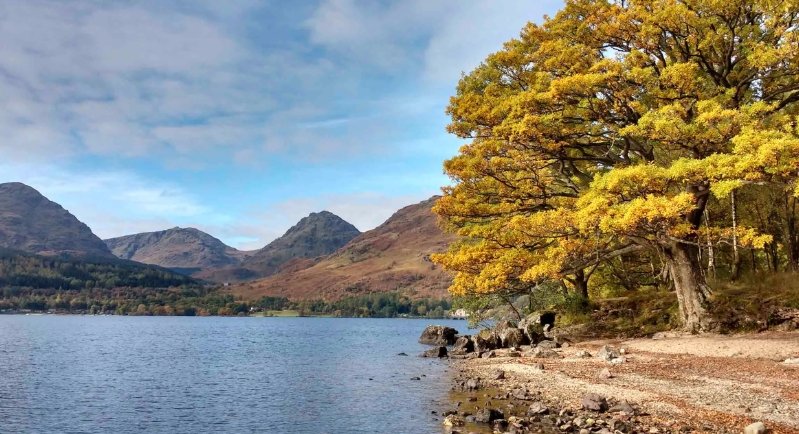Scotland’s most important wetlands will now get the same level of legal protection as Europe’s top conservation sites, after the government responded to a watchdog’s investigation into a long-standing policy gap.
Environmental Standards Scotland (ESS) confirmed this week that ministers have updated policy so all Ramsar sites — wetlands of international significance — must now go through rigorous environmental checks before any development is approved.
From Loophole to Landmark Policy Change
The update may sound technical, but campaigners say it fixes a flaw that has lingered for years. Until now, protection for Ramsar sites depended on whether they were also designated as Special Protection Areas (SPAs) or Special Areas of Conservation (SACs).
If they weren’t, they fell under a weaker category — Sites of Special Scientific Interest (SSSIs) — which do not always meet the strict conservation standards of the Ramsar Convention. That created a two-tiered system critics called inconsistent and potentially risky.
In plain terms, a wetland could be internationally recognised for its ecological value but still be more vulnerable to development than another site just a few miles away.

How the Case Came to ESS
The change traces back to a single public complaint. Someone flagged the issue to ESS, which has the power to investigate breaches or weaknesses in environmental governance.
The watchdog’s inquiry found that Scotland had no dedicated Ramsar protection law. Instead, it relied on the overlap between Ramsar designations and other types of conservation status. Where that overlap didn’t exist, protections were thinner.
It wasn’t just a legal oddity — in theory, it meant a developer could push through a project on one Ramsar site that wouldn’t stand a chance on another.
What the New Rules Mean in Practice
Under the revised policy, all Ramsar sites will now be treated as if they are European sites under the Conservation (Natural Habitats, &c.) Regulations 1994.
That means any plan or project affecting them will need a Habitats Regulations Appraisal (HRA) — the same scrutiny applied to Europe’s most sensitive environmental areas.
Some key changes include:
-
Uniform legal standards across all Ramsar sites.
-
Mandatory environmental impact checks before land use changes.
-
Stronger compliance with international Ramsar Convention obligations.
Scotland’s Ramsar Network — Big Numbers, Big Value
There are 51 Ramsar sites in Scotland, covering roughly 4% of the nation’s land. Many are clustered in ecologically rich zones like Loch Lomond and Rannoch Moor.
They’re more than just pretty landscapes. These wetlands:
-
Store significant amounts of carbon in peat and vegetation.
-
Provide flood protection by absorbing excess water.
-
Support migratory birds, rare plants, and aquatic life.
| Region | Example Sites | Ecological Significance |
|---|---|---|
| Central Scotland | Loch Lomond | Migratory bird habitat, carbon storage, recreation |
| Highlands | Rannoch Moor | Rare plant species, peatland ecosystem |
| Islands & Coastline | Machairs of the Outer Hebrides | Unique grassland-wetland mix, supports wading birds |
Why It Matters Beyond Conservation Circles
Developers, planners, and local councils will now need to factor in the heightened review process for any project that touches these areas. That could slow some proposals, but it also gives communities stronger grounds to challenge developments that threaten biodiversity.
One environmental lawyer described it as “closing the back door” — making sure there’s no easy route for developments that sidestep international conservation standards.
The Role of ESS in Driving Change
This is one of the clearest examples yet of ESS using its oversight powers to prompt concrete policy reform. Since its creation after Brexit, the body has stepped into the space once filled by EU environmental oversight mechanisms.
In this case, it didn’t just spot the problem — it published a formal report outlining the gap and pushed for ministers to align policy with treaty obligations. The Scottish Government’s swift compliance suggests a willingness, at least in this instance, to act on ESS recommendations.
A Step in the Right Direction — But Not the Final Word
While conservation groups welcomed the news, some argue Scotland still needs dedicated Ramsar legislation rather than relying on policy interpretation. That would make protections harder to reverse in the future.
For now, the policy change is binding on decision-makers, but unlike an act of Parliament, it can technically be amended or replaced without a full legislative process.
Still, with public awareness growing and wetlands increasingly seen as key in climate adaptation, the move is expected to have lasting impact — at least politically.


















